By Graham Gauld
I live in a small village in the south of France in the hills behind the beaches of Cannes and Frejus where very little happens. However, I am constantly reminded of the major role France played in the birth and development of automobile racing.
It is generally accepted that the first official motor race took place on July 11, 1895 with a race from Paris to Bordeaux and back. However, if one wishes to be pedantic, some years earlier Le Velocipede magazine organized a “Race” of just 1.5 miles in the center of Paris which was “won” by Georges Bouton of de Dion Bouton fame but as he was the only competitor the term “race” perhaps did not apply.
France is still in the thrall of motor sport and racing to the extent that we even have a small bi-monthly newspaper La Vie de l’Auto that gives one or two articles and reports on small events but, more importantly, a list of every type of motoring event taking place in France. If you are ever in France on holiday, buy a copy on line for a paltry 3 euros 50 and the events are all listed by the various French regions.
So it is hard to get away from motorsports, even in the tiny village where I live. A few weeks ago I was walking through the village of Claviers when I heard the sound of something sporty, and a small, noisy two-seater sports car sped by only to park round the corner. At first glance it looked like an Amilcar but in fact was a well-restored 1932 Salmson GS. Amongst all the French sports car makes the Salmson never seems to figure strongly against the Amilcar, but in fact “Salmson was probably the most successful of the small sporting 1100 cc produced in France during the 1920,” wrote Michael Sedgwick in The Encyclopedia of Motor Sport.
The company was based in Billancourt on the Seine in the center of Paris – later to become the home of Renault. Originally it was founded by Emile Salmson around 1890 to manufacture steam powered compressors and pumps for the railway companies. Before WW1 they developed aircraft engines but went on to produce cars. One man truly transformed Salmson into a car making company, the engineer Emil Petit. Salmson wanted to get into the car business and came to an arrangement with the British GN company that built cyclecars and so built these in Paris under license.
Petit’s first four cylinder engine had unusual valve gear: a single pushrod actuated both inlet and exhaust valves pushing to open the exhaust and pulling to open the inlet. It was put into the Salmson AL series and the company made their major International debut in the very first Le Mans 24 hour race in 1923. The engine was 1086 cc and not only finished 12th overall, but won the 750-1100cc sports car class.
But Petit was not finished, he was already working on a twin-cam version of the engine that came out in the D type. As Griff Borgeson writes, “If one overlooks the 2LS Ballot of 1921, one can accept the statement by Chris Draper, author of the Salmson Story, that this ‘was the first marque in the world to produce in series a touring car equipped with a DOHC engine..’ “
They next arrived at Le Mans in 1926 where the leading car finished 9th overall but their greatest success was at Le Mans in 1927 when two little Salmsons finished second and third overall behind the winning 3 liter Bentley driven by Sammy Davis and Dr John Benjafield, a truly giant killing performance.
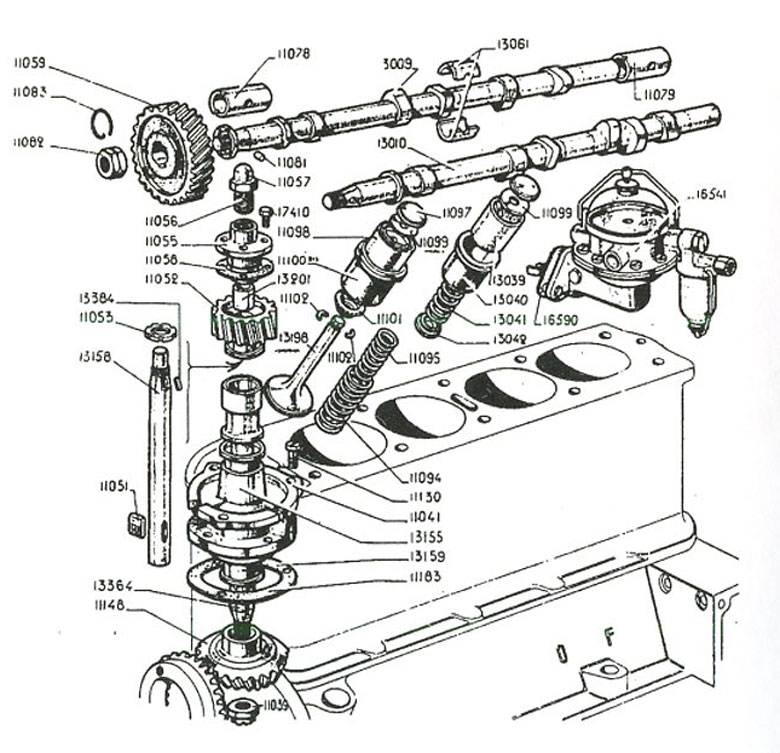
The 1929 variation of Petit’s DOHC engine shows a rear mounted cam drive and note the Lampredi-Fiat like removeable shims in the cups for valve adjustment.
A “Grand Prix” variant with a Cozette supercharger was successful in voiturette classes in the late 1920s and the cars continued to win in their class into the 1930s. These cars were able to defeat the Amilcars until the advent of the fabled Amilcar MC0 six.
Petit went a step further and designed a straight eight twin cam often thought to have desmodromic valves. (It didn’t, see photo). It did have a center cam drive which pre-dated the Jano 8C 2300 though. However, only two were built, and it being the Depression, Salmson gave up racing, and the cars passed into the hands of Armand Girod, who won the 1100cc class at Montlhery in 1934. The great days of the Amilcar and Salmson racing rivalry were coming to a close by 1934.
Salmson were to go on to produce larger and more luxurious cars right up until 1957 but the writing was on the wall just five years before when they only produced 89 cars as the war-torn market had still not financially recovered.
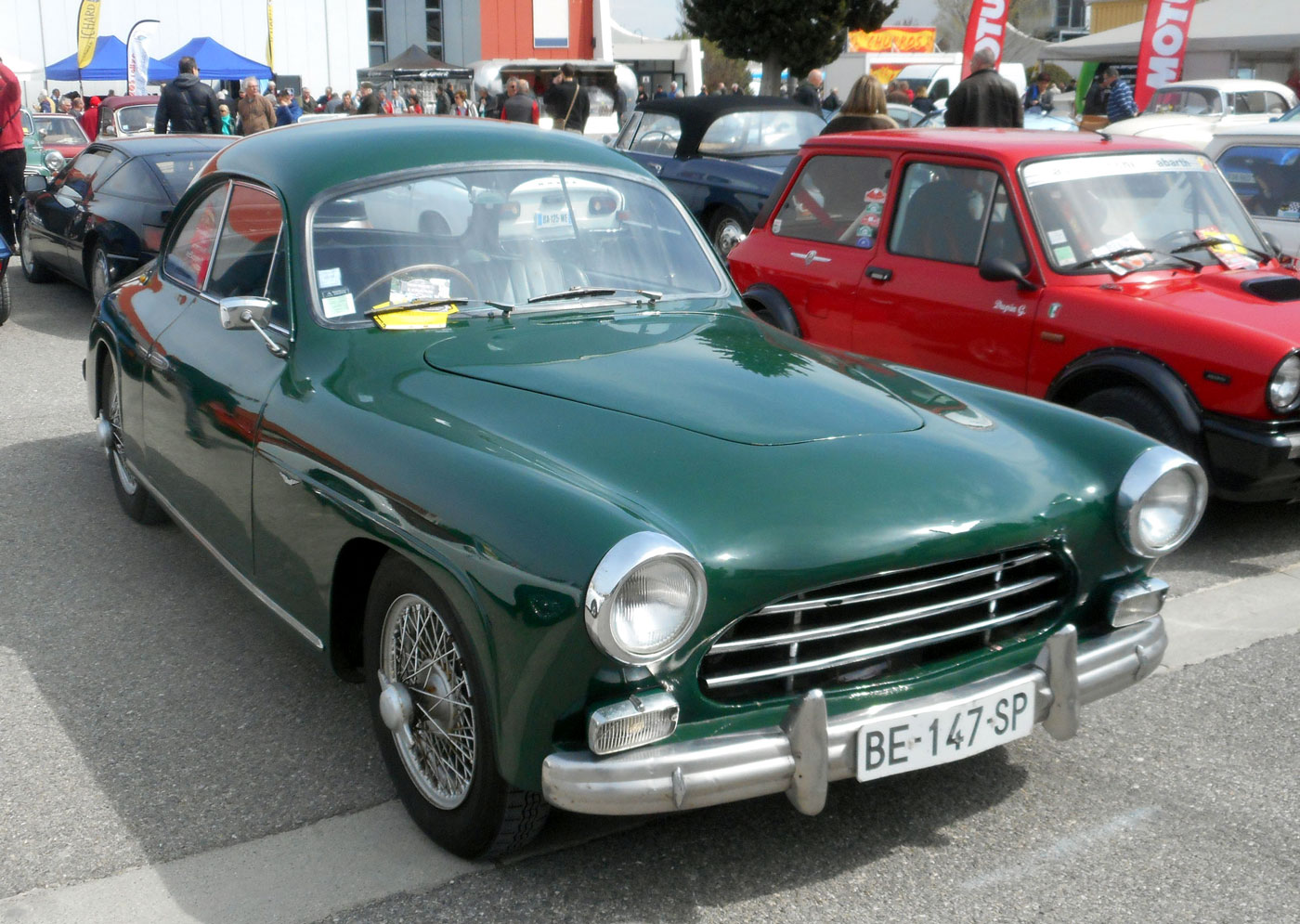
The last of the Salmsons were somewhat attractive coupes such as this 1956 model. Graham Gauld photo.
I caught up with the owner of the Salmson GS that arrived in the village as he was having a coffee, waiting for the radiator to cool down so he could top it up.
He was very proud of his car and babbled on about how good an engineer Petit had been and that he rarely had any trouble with an engine he called “a gem”. He unearthed a can from the tiny trunk in the narrow tail, and refilled with water and then rumbled off to the cheers of the elderly locals clutching a beer outside the bar.
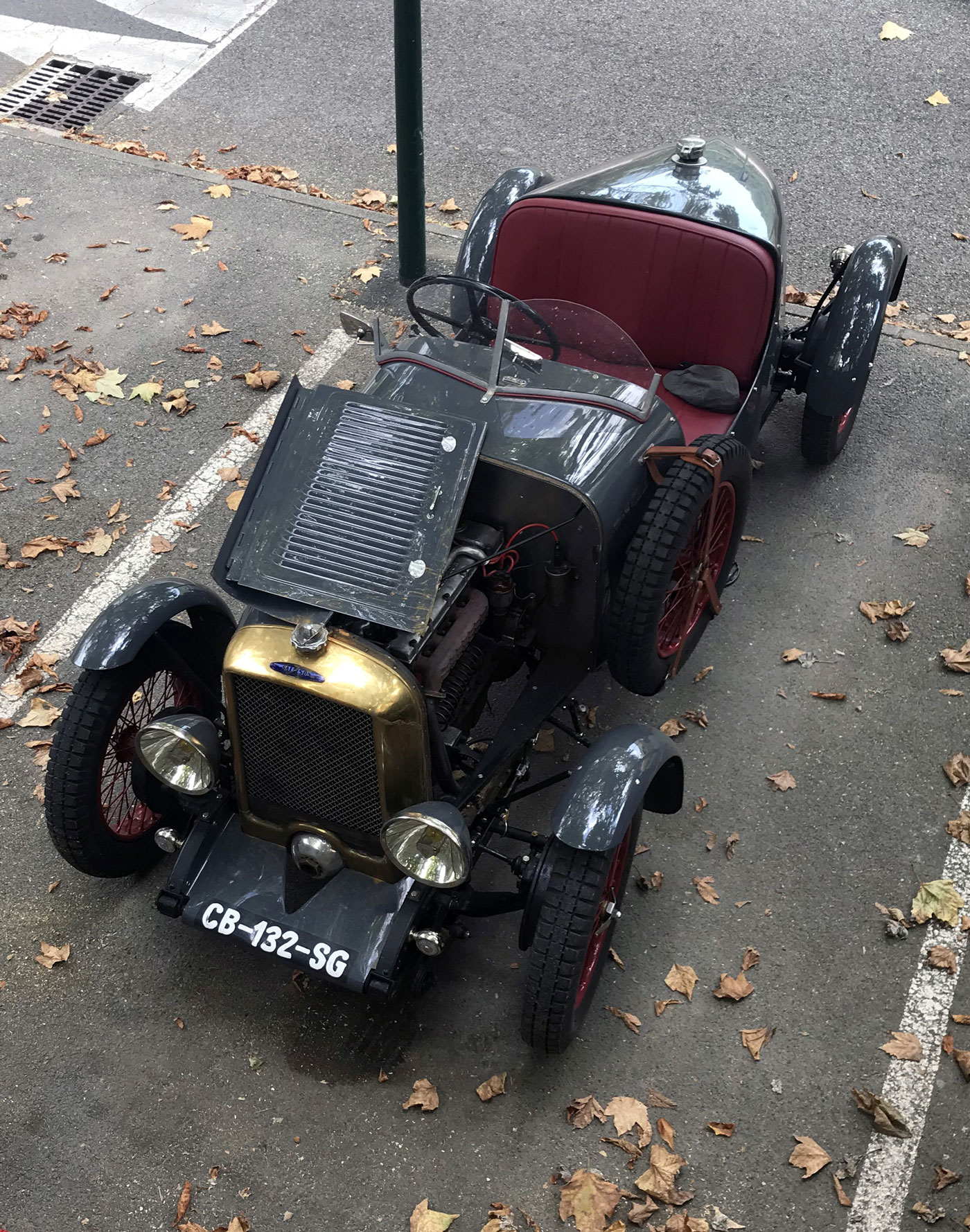
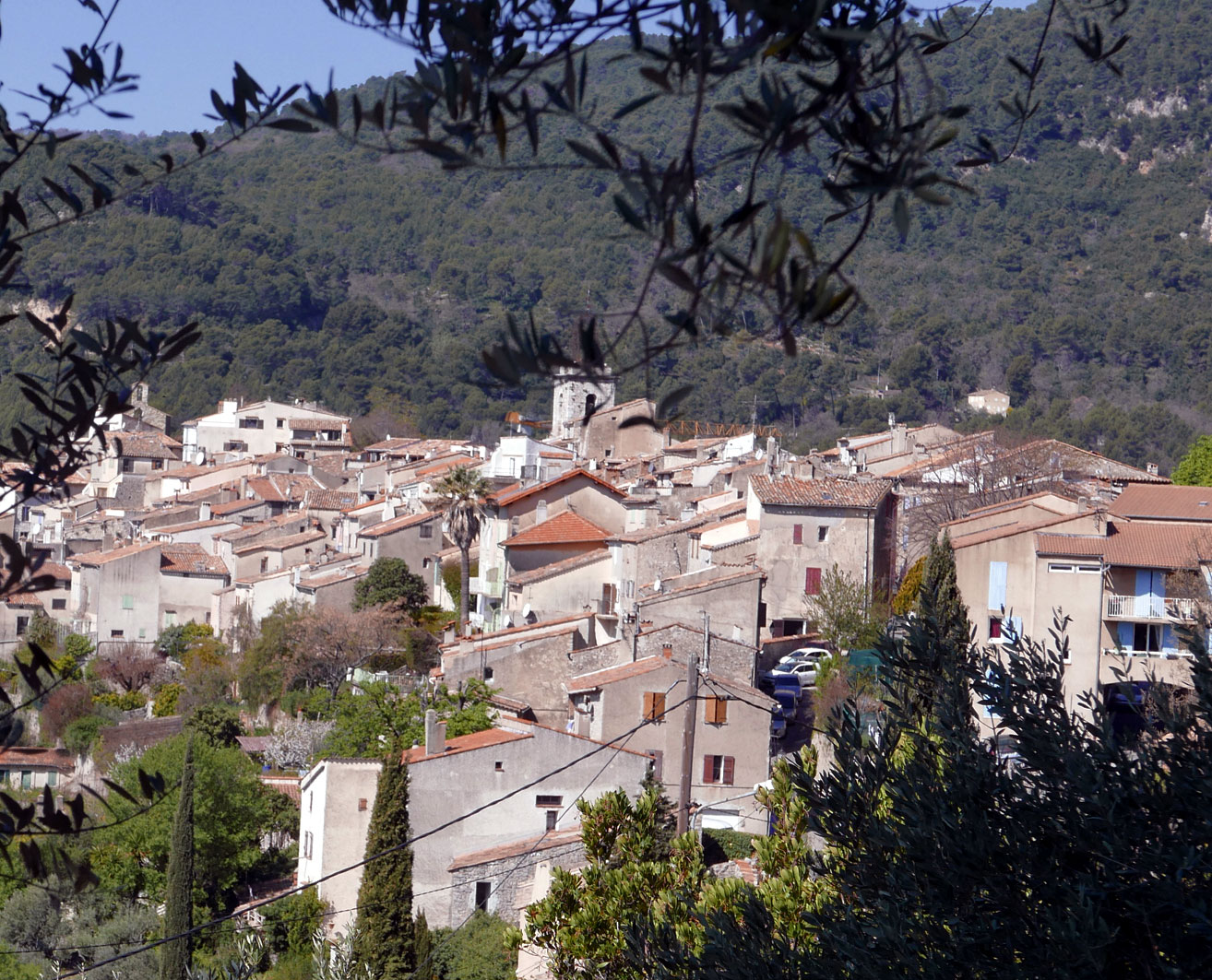
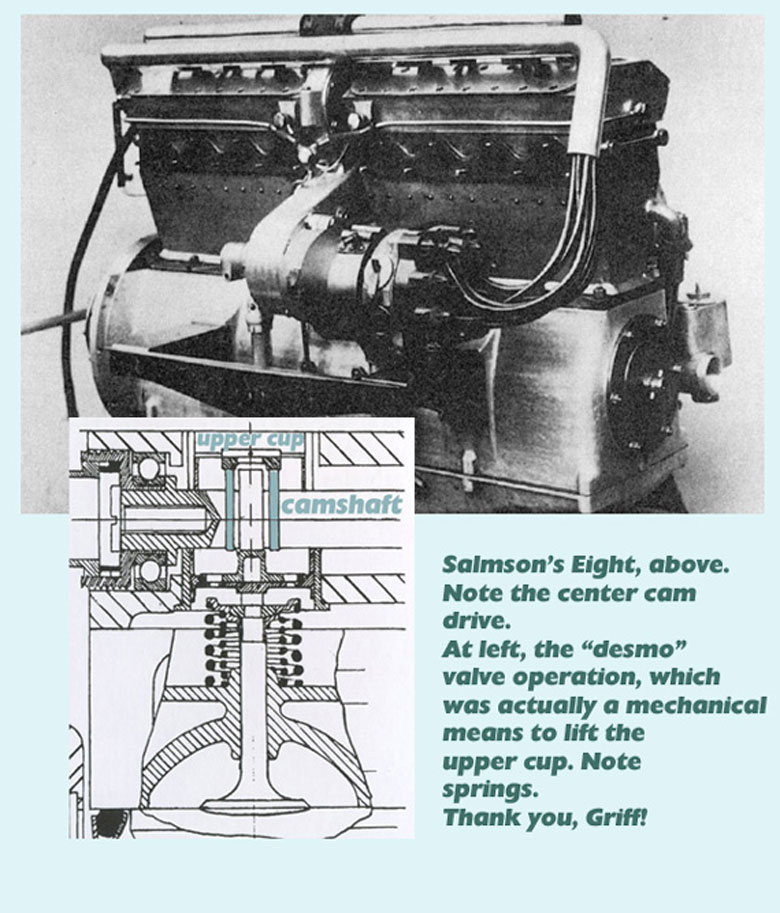
I grew up in Saint Jeannet, near Vence. Those backroads were where I learned to drive the many modern Alfa Romeos I had. You can still find some interesting cars tucked away in garages. I saw a Matra 530 in St Jeannet. I remember not liking it as a kid but boy, would I love to have one now.
I often go back and visit friends and their vintage cars. I’m also planning on doing the Rallie de Monte Carlos des Anciennes. Perhaps I can ping you then?
So ….. did Petit, himself, design the 8C centre cam drive engine? Interesting that the 1956 Salmson is also a RHD car. Albeit in BRG too. Mr. Gauld has the very best eye for spotting tasty machinery. Plus a 24/7 ready camera = v special photographs.
Alain, from Graham..
Great to have your kind comments and glad to see that you support Veloce Today. I am a bit older than you so perhaps my eyes are better than yous !!!! Smile GG
Nick, From Graham…
Yes I know the area well and you describe the roads accurately. By all means get in touch if we have a Monaco Historique Rally in January, fingers crossed. You can contact me through VeloceToday .
Graham Gauld
Alain,
According to Borgeson in “The Classic Twin Cam Engine” Petit designed the 8C center cam drive for his eight, and so everyone thought that’s where Jano got the idea from for his Alfa 8C. Borgeson also stated that central cam drive can be traced back to the Mead rotary valve engine of 1912 “but the claim of Petit’s influence on Jano merits consideration.”
Pete
A fond memory is of Jacques Tati’s M. Hulot and his Salmson In “Monsieur Hulot’s Holiday”…a night-time scene of lights coming on in successive houses as the Salmson with its strange exhaust sound progresses. Tati was a Motor sport enthusiast, and a VSCC Bulletin some years ago had him in the crowd at Le Mans.